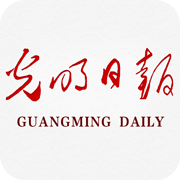开栏语:“中华思想文化术语传播工程”自2014年启动以来,文、史、哲学科及翻译领域的中外权威专家100余人参与中华思想文化术语的遴选、诠释、翻译工作。截至2021年9月,“术语工程”所在秘书处已出版900条思想文化术语,并输出了32个语种。这900条术语,反映了中华民族的人文精神、思维方式、价值观念和文化特征,释义准确、简明,辅以引例的方式呈现其历史语境,然后由包括多位知名汉学家在内的精英译审团队译为外语,以便更好地服务于中国的对外交往活动,讲好中国故事,传播好中国声音。本刊特辟专栏连载术语词条(中英对照版),以助力中华思想文化术语的传承与传播。
中华
/zhōnghuá/Zhonghua
“中华”是“中国”与“华夏”复合的简称。“华”同“花”,喻指文化灿烂。华夏的先民建国于黄河中下游,自认为居天下之中央,且又文化发达,所以称“中华”。随着华夏族为主体的多民族国家的不断扩张,凡所统辖之地,皆称中华。在近现代历史中,“中华”成为指称中国、中国人及中国文化的一种符号。
Thisterm is an abbreviation of the compound word formed by Zhongguo (中国) and Huaxia(华夏). Here, hua (华) also means“flower”or“flowery,”which was used as an analogy for a splendid culture. The ancestors of the Huaxia people established their state in the middle and lower reaches of the Yellow River, which they thought was the center (zhong) of the world and which had a flourishing culture (hua), so the state was called Zhonghua. This multi-ethnic state, with the Huaxia people as the predominant group of its population, later began its territorial expansions, and the places where it extended to became part of Zhonghua. In modern times,Zhonghua became a term denoting China, the Chinese people, and its culture.
引例 Citation:
中华者,中国也。亲被王教,自属中国,衣冠威仪,习俗孝悌,居身礼义,故谓之中华。(王元亮《唐律释文》卷三)
(中华即中国。自身接受了王道教化,自然就属于中国了,穿衣戴帽有威仪,风俗讲究孝悌,立身处世追求礼义,所以称之为“中华”。)
Zhonghua refers to China. Under the wise rule of the sage king, all his subjects belong to China. They are dressed in a dignified manner,practice filial piety and fraternal duty, and follow moral norms in personal and social conduct.This is the country called Zhonghua. (Wang Yuanliang: Commentary and Explanation on Well-Known Law Cases ofthe Tang Dynasty)
华夏
/huáxià/
Huaxia / The Han People
古代居住于中原地区的汉民族先民的自称。最早称“华”“诸华”或“夏”“诸夏”。“华夏”实际表达的是以汉民族为主体的中原先民对其共同的生活、语言、文化特征的一种认同和传承。秦建立以华夏为主体的统一的多民族国家以后,华夏才成为比较稳定的族群。自汉代以后,华夏又有了“汉”这一名称与之并用。后来华夏进一步引申为指中国或汉族。
Theforefathers of the Han people living in the Central Plains referred to themselves by this term. Earlier on they called themselves Hua(华), Zhuhua (诸华), Xia (夏) or Zhuxia (诸夏). The term Huaxia (华夏) embodies the common identity of the way of life, language,and culture of the people living in the Central Plains, mainly the Han people, and the inheri-tance of such identity. The Huaxia people evolved into a fairly stable ethnic group in the Qin Dynasty, which established a unified coun-try of many ethnic groups with Huaxia being the principal group. In the Han Dynasty, the term Han became an alternative name ofHuaxia.Later, the term Huaxia was extended to refer to China or the Han people.
引例 Citation:
夏,大也。中国有礼义之大,故称夏;有服章之美,谓之华。华夏一也。(《左传·定公十年》孔颖达正义)
(夏的含义是“大”。华夏族的礼仪宏富伟大,所以称为“夏”;华夏族的衣服华美出众,所以称为“华”。“华”与“夏”是同一个意思。)
The Chinese character夏(xia) means big and great. Since the ancient Huaxia people practiced grand and elaborate rituals, they called them-selves Xia (great). Their dresses were resplen-dent, so they were referred to as Hua (splen-did). Therefore, both Hua and Xia refer to the Han people. (Kong Yingda: Correct Meaning of Zuo’s Commentary on The Spring and Autumn Annals)



 上一版
上一版


 缩小
缩小 全文复制
全文复制 上一篇
上一篇